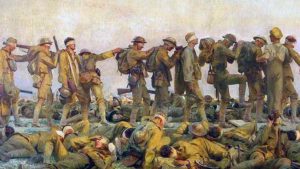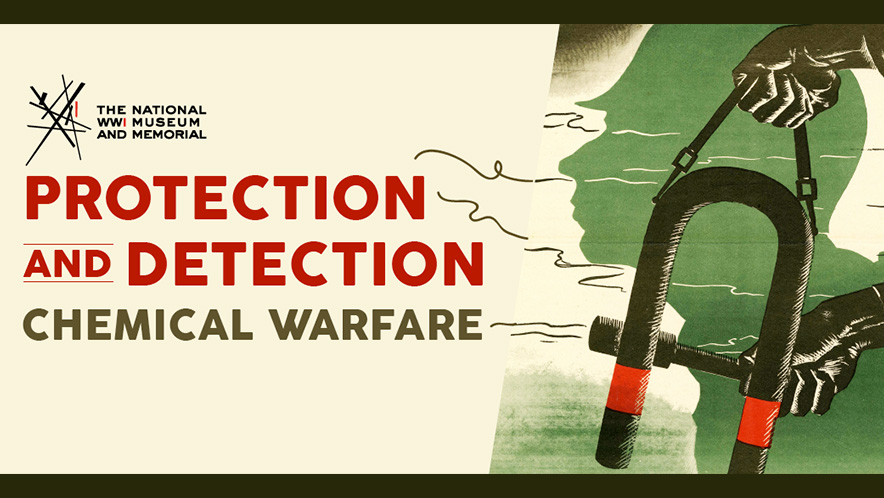As part of MRIGlobal’s support of The National World War I Museum’s special exhibition featuring John Singer Sargent’s masterpiece Gassed, a public panel discussion is scheduled for Tuesday, April 10 at 6:30 p.m. in the J.C. Nichols Auditorium of The National World War I Museum and Memorial.
Protection and Detection: Chemical Warfare is moderated by The World War I Museum’s Dr. Matthew Naylor while panelists discuss the enduring legacies of WWI and the complex issues of chemical warfare protection and detection in the 21st century.
Panelists include:
- Richard Myers, former Chairman of the Joint Chiefs of Staff, retired four-star general in the United States Air Force, now president of Kansas State University
- Tom Sack, Ph.D., President and CEO of MRIGlobal
- Ron Trewyn, Ph.D., Kansas State University liaison to the National Bio and Agro-defense Facility
Gassed is on loan from the Imperial War Museums in the U.K. and is the focal point in this special centennial exhibition. Sargent’s landmark panoramic captures the scene he witnessed in 1918 Bailleulval where British soldiers blinded by a mustard gas attack were receiving care.
The exhibit features historical and contemporary objects on detection and protection from chemical warfare. It runs through June 3, 2018 in the Museum’s Wylie Gallery.
About The Gassed Exhibit
John Singer Sargent’s incredible masterpiece Gassed is truly one of the giants of the art world. It is more than nine feet tall by 21 feet long. While the landmark painting is the focal point in this special centennial exhibition, the exhibit includes original maps of the dressing station where Sargent witnessed the scene he depicted and reproductions of many of his study drawings.
Additionally, the Museum and Memorial partnered with the U.S. Army Chemical Corps Museum to feature historical and contemporary objects showing detection and protection from chemical warfare from World War I to the modern era. Assistance was also provided by MRIGlobal.
About John Singer Sargent’s Gassed

Reaching a British dressing station southwest of the French city of Arras in the summer of 1918, famed American artist John Singer Sargent found his subject of an overdue painting. Sargent had been commissioned by the British Government to “contribute the central painting for a Hall of Remembrance for the World War.” He had procrastinated until he saw the dressing station.
The final product, Gassed, is considered one of the most important war-related works of the past several centuries, Gassed was hailed as “monumental” by the New York Times, a “masterpiece” by the Daily Mail, “magnificent by the Telegraph, “epic” by the Associated Press and “extraordinary” by The Guardian.
Gassed has been viewed by tens of millions of people since its completion. Its significance has grown over time as noted British broadcaster/historian Jon Snow hailed the painting as one of the “10 Best British Artworks About War,” while The Guardian listed Gassed among “1,000 Artworks to See Before You Die”.
About the National World War I Museum and Memorial
The National World War I Museum and Memorial is America’s leading institution dedicated to remembering, interpreting and understanding the Great War and its enduring impact on the global community. The Museum holds the most diverse collection of World War I objects and documents in the world and is the second-oldest public museum dedicated to preserving the objects, history and experiences of war. The Museum takes visitors of all ages on an epic journey through a transformative period and shares deeply personal stories of courage, honor, patriotism and sacrifice. Designated by Congress at America’s official World War I Museum and Memorial located in downtown Kansas City, Mo., it inspires thought, dialogue and learning to make the experiences of the Great War era meaningful and relevant for present and future generations. It is located at 2 Memorial Drive in Kansas City, Mo. To learn more, visit theworldwar.org

